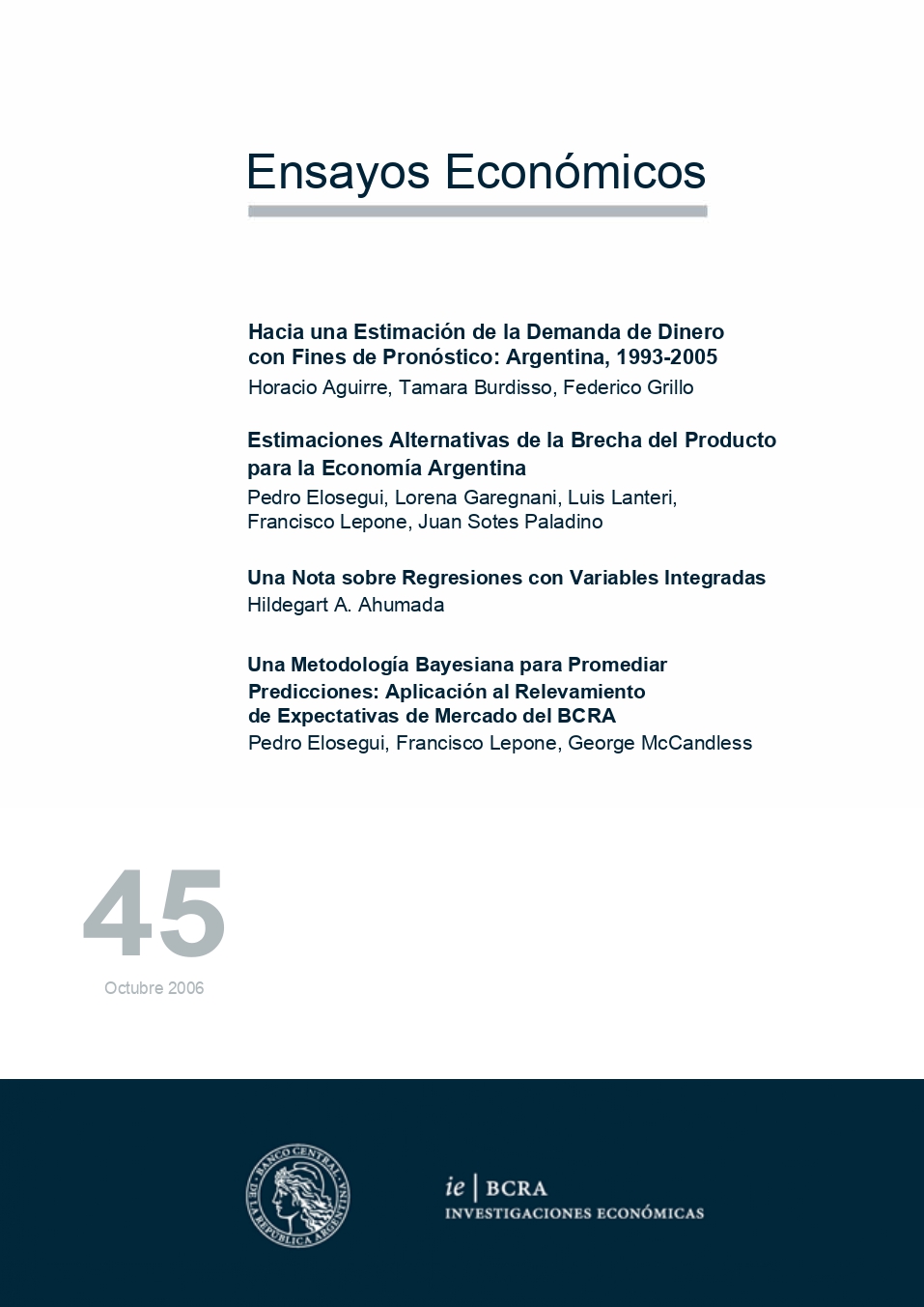Towards an estimation of the money demand for forecasting purposes: Argentina, 1993-2005
Keywords:
Argentina, Demand for Money, Forecast, Monetary Aggregates, Monetary PolicyAbstract
This paper seeks to make forecasts of monetary aggregates useful for the formulation of monetary policy; in particular, such that allow alternative economic scenarios to be evaluated, with a prediction horizon of five quarters, and considering public and private aggregates of average daily balances. To do this, relationships are estimated between different aggregates–circulating currency held by the public, M1*, M2* and M3*–and GDP and the nominal interest rate. The selected period covers two different macroeconomic regimes, which is problematic when analyzing the long-term relationships between the chosen variables: the coefficients do not correspond to the values suggested by the theory; and the possible cointegration relationships are not stationary. In contrast, the estimated short-term models exhibit acceptable goodness of fit, and evidence of stable parameters. In the in-sample forecast they do not show errors significantly different from zero, and the predicted values between 2004:III and 2005:III fall within confidence intervals of one standard deviation. Additionally, the unbiasedness of the forecasts is corroborated. Thus, the models appear reliable in their predictive capacity. However, taking into account the Central Bank's own objectives and restrictions, it is necessary to use more demanding criteria: although the forecast errors are not significant, they become persistent as the prediction horizon extends; and currently they would indicate overestimation of broad aggregates and - to a lesser extent - underestimation of more liquid ones. This behavior could be related to a more intensive use of cash by economic agents after the crisis. An adjustment of the forecasts is proposed that takes into account this problem. The models thus obtained allow us to evaluate what level of monetary goals is consistent with the macroeconomic scenario considered, using as inputs variables whose forecasts can be obtained from other models developed in the BCRA.
JEL classification: E41 ; E47




